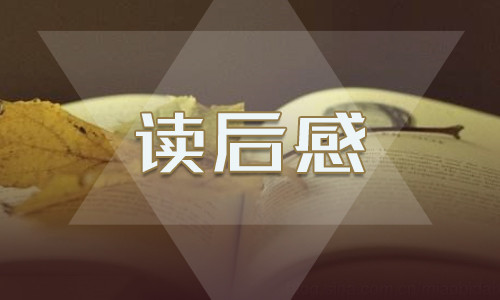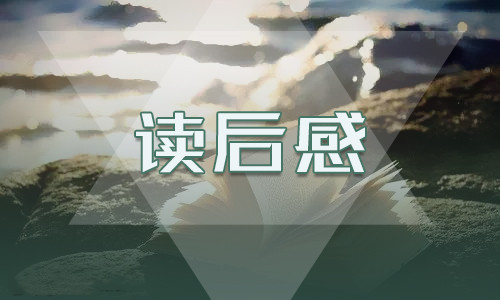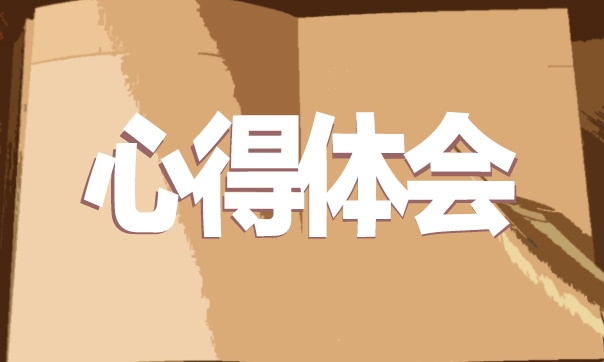[D] tolerance
32. According to Paragraph 2, CSR helps a company by [A] guarding it against malpractices [B] protecting it from consumers [C] winning trust from consumers. [D] raising the quality of its products
33. The expression “more lenient”(line 2,Para.4)is closest in meaning to [A] less controversial [B] more lasting [C] more effective [D] less severe
34. When prosecutors evaluate a case, a company’s CSR record [A] comes across as reliable evidence [B] has an impact on their decision
[C] increases the chance of being penalized [D] constitutes part of the investigation
35. Which of the following is true of CSR according to the last paragraph? [A] The necessary amount of companies spending on it is unknown [B] Companies’ financial capacity for it has been overestimated [C] Its negative effects on businesses are often overlooked [D] It has brought much benefit to the banking industry
Text 4
There will eventually come a day when The New York Times ceases to publish stories on newsprint. Exactly when that day will be is a matter of debate. “Sometime in the future,” the paper’s publisher said back in 2010.
Nostalgia for ink on paper and the rustle of pages aside, there’s plenty of incentive to ditch print. The infrastructure required to make a physical newspaper― printing presses, delivery trucks ― isn’t just expensive; it’s excessive at a time when online-only competitors don’t have the same set of financial constraints. Readers are migrating away from print anyway. And though print ad sales still dwarf their online and mobile counterparts, revenue from print is still declining.
Overhead may be high and circulation lower, but rushing to eliminate its print edition would be a mistake, says BuzzFeed CEO Jonah Peretti.
Peretti says the Times shouldn’t waste time getting out of the print business, but only if they go about doing it the right way. “Figuring out a way to accelerate that transition would make sense for them,” he said, “but if you discontinue it, you’re going have your most loyal customers really upset with you.”
Sometimes that’s worth making a change anyway. Peretti gives the example of Netflix discontinuing its DVD-mailing service to focus on streaming. “It was seen as blunder,” he said. The move turned out to be foresighted. And if Peretti were in charge at the Times? “I wouldn’t pick a year to end print,”he said “I would raise prices and make it into more of a legacy product.”
The most loyal customers would still get the product they favor, the idea goes,
and they’d feel like they were helping sustain the quality of something they believe in. “So if you’re overpaying for print, you could feel like you were helping,”Peretti said. “Then increase it at a higher rate each year and essentially try to generate additional revenue.” In other words, if you’re going to make a print product, make it for the people who are already obsessed with it. Which may be what the Times is doing already. Getting the print edition seven days a week costs nearly $500 a year ― more than twice as much as a digital ― only subscription.
“It’s a really hard thing to do and it’s a tremendous luxury that BuzzFeed doesn’t have a legacy business,” Peretti remarked. “But we’re going to have questions like that where we have things we’re doing that don’t make sense when the market changes and the world changes. In those situations, it’s better to be more aggressive that less aggressive.”
36. The New York Times is considering ending it’s print edition partly due to [A] the increasing online and sales [B] the pressure from its investors [C] the complaints from its readers [D] the high cost of operation
37. Peretti suggests that in face of the present situation, The Times should [A] make strategic adjustments [B] end the print sedition for good [C] seek new sources of leadership [D] aim for efficient management
38. It can be inferred from paragraphs 5and 6 that a “ legacy product” [A] helps restore the glory of former times [B] is meant for the most loyal customers [C] will have the cost of printing reduced [D] expands the popularity of the paper 39. Peretti believes that in a changing world [A] traditional luxuries can stay unaffected [B] cautiousness facilitates problem-solving [C] aggressiveness better meets challenges [D] legacy businesses are becoming out dated
40. Which of the following would be the best title of the text? [A] shift to online newspapers all at once
[B] Cherish the Newspapers still in Your Hand [C] keep Your Newspapers Forever in Fashion [D] Make Your print Newspapers a luxury Good
Part B
Directions: Read the following text and answer the questions by choosing the most
suitable subheading from the list A-G for each of the numbered paragraphs (41-45). There are two extra subheadings. Mark your answers on the ANSER SHEET. (10 point)
[A] Create a new image of yourself
[B] Decide if the time is right [C] Have confidence in yourself [D] Understand the context [E] Work with professionals [F] Make it efficient [G] Know your goals
No matter how formal or informal the work environment, the way you present yourself has an impact. This is especially true in the first impressions. According to research from Princeton University , people assess your competence, trustworthiness, and likeability in just a tenth of a second, solely based on the way you look.
The difference between today’s workplace and the “dress for success”era is that the range of options is so much broader. Norms have evolved and fragmented. In some settings, red sneakers or dress T-shirts can convey status; in other not so much. Plus, whatever image we present is magnified by social-media services like LinkedIn. Chances are, your headshots are seen much more often now than a decade or two ago. Millennials, it seems, face the paradox of being the least formal generation yet the most conscious of style and personal branding. It can be confusing.
So how do we navigate this? How do we know when to invest in an upgrade? And what’s the best way to pull off one than enhances our goals? Here are some tips:
41
As an executive coach, I’ve seen image upgrades be particular helpful during transitions-when looking for a new job, stepping into a new or more public role, or changing work environments. If you’re in a period of change or just feeling stuck and in a rut, now may be a good time. If you’re not sure, ask for honest feedback from trusted friends, colleagues and professionals. Look for cues about how others perceive you. Maybe there’s no need for an upgrade and that’s OK 42
Get clear on what impact you’re hoping to have. Are you looking to refresh your image or pivot it? For one person, the goal may be to be taken more seriously and enhance their professional image. For another, it may be to be perceived as more approachable, or more modern and stylish. For someone moving from finance to advertising, maybe they want to look more “SoHo.” (It’s OK to use characterizations like that )
43
Look at your work environment like an anthropologist. What are the norms of your environment? What conveys status? Who are your most important audiences? How do the people you respect and look up to present themselves? The better you understand the cultural context, the more control you can have over your impact.
44
Enlist the support of professionals and share with them your goals and context. Hire a personal stylist, or use the free styling service of a store like J. Crew. Try a hair stylist instead of a barber. Work with a professional photographer instead of your spouse or friend. It’s not as expensive as you might think. 45
The point of a style upgrade isn’t to become more vain or to spend more time fussing over what to wear. Instead, use it as an opportunity to reduce decision fatigue. Pick a standard work uniform or a few go-to options. Buy all your clothes at once with a stylist instead of shopping alone, one article of clothing at a time.
Part C
Directions: Read the following text carefully and then translate the underlined
segments into Chinese. Your translation should be written neatly on the ANSWER SHEET. (10 points)
Mental health is our birthright. (46) we don’t have to learn how to be mentally healthy, it is built into us in the same way that our bodies know how to heal a cut or mend a broken bone. Mental health can’t be learned, only reawakened. It is like immune system of the body, which under stress or through lack of nutrition or exercise can be weakened, but which never leaves us. When we don’t understand the value of mental health and we don’t know how to gain access to it, mental health will remain hidden from us. (47) Our mental health doesn’t go anywhere, like the sun behind a cloud, it can be temporarily hidden from view, but it is fully capable of being restored in an instant. Mental health is the seed that contains self-esteem –confidence in ourselves and an ability to trust in our common sense. It allows us to have perspective on our lives-the ability to not take ourselves too seriously, to laugh at ourselves, to see the bigger picture, and to see that things will work out. It’s a form of innate or unlearned optimism. (48) Mental health allows us to view others with sympathy if they are having troubles, with kindness if they are in pain, and with unconditional love no matter who they are. Mental health is the source of creativity for solving problems, resolving conflict, making our surroundings more beautiful, managing our home life, or coming up with a creative business idea or invention to make our lives easier. It gives us patience for ourselves. And toward others as well as patience while driving, catching a fish, working on our car, or raising a child. It allows us to see the beauty that surrounds us each moment in nature, in culture, in the flow of our daily lives. (49)Although mental health is the cure-all for living our lives, it is perfecting ordinary as you will see that it has been there to direct you through all your difficult decisions. It has been available even in the most mundane of life situations to show you right from wrong, good from bad, friend from foe. Mental health has commonly been called conscience, instinct, wisdom, common sense, or the inner voice, we think of it simply as a health and helpful flow of intelligent thought. (50) As you will come to see, knowing that mental health is always available and knowing to trust it allow us to slow down to the moment and live life happily.
Section III Writing Part A
51. Directions: Suppose you are a librarian in your university. Write a notice of about
100 words. Providing the newly-enrolled international students with relevant information about the library.
You should write neatly on the ANSWER SHEET.
Do not sign your own name at the end of the notice. Use Li Ming instead. Do not write the address. (10 points)
Part B
52. Directions: Write an essay of 160-200 words based on the following pictures In
your essay, you should
1) describe the pictures briefly 2) interpret the meaning , and 3) give your comments
You should write neatly on the ANSWER SHEET.(20 points)
Do not sign your own name at the end of the letter. Use Li Ming instead. Do not write the address. (10 points)
【参考答案】: Section I
1-5 BDCAC 6-10 ACCDB 11-15 DDBAC 16-20 DBACA
Section II Part A
21-25. ADBCA 26-30. ADCDD 31-35. ACDBA 36-40. DABCD Part B
41-45. BGDEF Part C
46. 我们不必一定去学习如何做到心理健康,这种能力植根于我们自身,就像我们的身体知道如何愈合伤口,如何修复断骨。
47. 心理健康不会去往他方。如同乌云可能蔽日,心理健康可能会暂时隐藏于视线之外,但它完全可以在须臾之间复原如初。
48. 心理健康使我们在他人陷入危难之时给予同情,痛苦不已时给予善意,无论对谁,都能给予无条件的爱。
49. 尽管心理健康是人们度过一生的一剂万能良药,但它又普通不已,因为当你需要做出艰难决定时,都可感受到它的存在。





